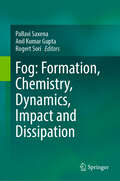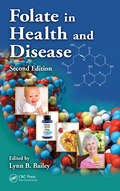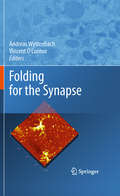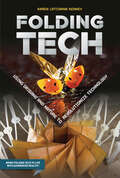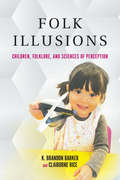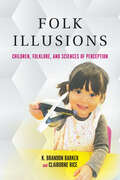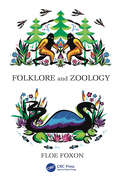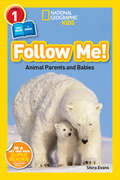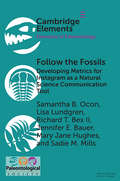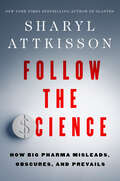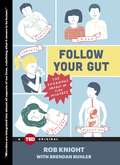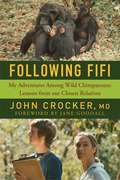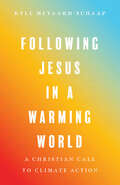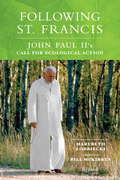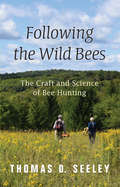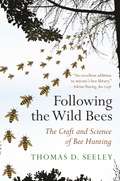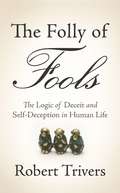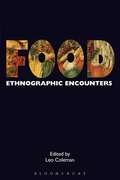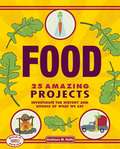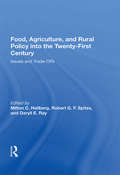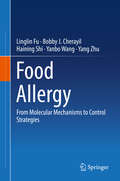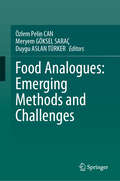- Table View
- List View
Fog: Formation, Chemistry, Dynamics, Impact and Dissipation
by Anil Kumar Gupta Pallavi Saxena Rogert SoríThis book addresses the atmospheric phenomenon of fog formation and its impacts on plant and human life. It covers the chemistry, formation, dynamics, impacts and dissipation of the fog. It also elucidate basic concepts of formation of fog, role of meteorology in fog formation, chemistry of fog, how different chemical constituents present in fog affects its quality and surrounding atmosphere, impacts on plant species, human health, visibility and economy and dissipation of fog by cost effective techniques. It also highlights the use of some plant species in managing the fog induced pollution. This book is of interest to teachers, researchers, climate change scientists, professionals involved in air quality, meteorology, plant and humans related research, capacity builders and policymakers. Also the book serves as additional reading material for undergraduate and graduate students of agriculture, forestry, ecology, and environmental sciences. National and international environmentalists, policy makers will also find this to be a useful read.
Folate in Health and Disease
by Lynn B. BaileyDuring the fifteen years since the bestselling first edition of Folate in Health and Disease was published, there have been thousands of new research studies related to folate and its role in health and disease. The second edition of the book uniquely bridges the gap between basic science and public health/clinical medicine.Presents Groundbreaking
Folding for the Synapse
by Andreas Wyttenbach Vincent O'ConnorFolding for the Synapse addresses the current view on how protein folding and misfolding, controlled by molecular chaperones, contribute to synapse function and dysfunction. Molecular chaperones have been studied in relation to de novo protein folding, but there is increasing awareness that chaperone function is required for the regulation of protein dynamics when functioning physiologically as an isolated moiety or part of a protein complex. This book will introduce both important concepts of folding machineries and give examples of the biological relevance of further chaperone functions.
Folding of Disulfide Proteins
by Rowen J. Chang Salvador VenturaThis book aims to cover the knowledge of protein folding accumulated from studies of disulfide-containing proteins, including methodologies, folding pathways, and folding mechanism of numerous extensively characterized disulfide proteins. Folding of Disulfide Proteins will be valuable supplementary reading for general biochemistry, biophysics, molecular biology, and cellular biology courses for graduate and undergraduate students. This book can also be used for specialized graduate-level biochemistry, biophysics, and molecular biology courses dedicated to protein folding as well as related biological problems and diseases. Will also be of interest to everybody interested in problems related to protein folding, and anyone who is interested in understanding the mechanism of protein misfolding and protein misfolding-related diseases.
Folding Tech: Using Origami and Nature to Revolutionize Technology
by Karen Latchana KenneySpace probes, self-assembling robots, crash-absorbing cars, and designer proteins all have one thing in common: their use of folding technologies. To develop these technologies, engineers are taking inspiration from an unusual source—origami, the ancient art of paper folding. Examine origami's origins, how it intersects with mathematics, and how it became a tool to solve some of the most complicated challenges in engineering, architecture, technology, and medicine today. Plus, get a close-up look at these technologies with two augmented reality images included in the book!
Folk Illusions: Children, Folklore, and Sciences of Perception
by K. Brandon Barker Claiborne RiceWiggling a pencil so that it looks like it is made of rubber, "stealing" your niece's nose, and listening for the sounds of the ocean in a conch shell– these are examples of folk illusions, youthful play forms that trade on perceptual oddities. In this groundbreaking study, K. Brandon Barker and Clairborne Rice argue that these easily overlooked instances of children's folklore offer an important avenue for studying perception and cognition in the contexts of social and embodied development. Folk illusions are traditionalized verbal and/or physical actions that are performed with the intention of creating a phantasm for one or more participants. Using a cross-disciplinary approach that combines the ethnographic methods of folklore with the empirical data of neuroscience, cognitive science, and psychology, Barker and Rice catalogue over eighty discrete folk illusions while exploring the complexities of embodied perception. Taken together as a genre of folklore, folk illusions show that people, starting from a young age, possess an awareness of the illusory tendencies of perceptual processes as well as an awareness that the distinctions between illusion and reality are always communally formed.
Folk Illusions: Children, Folklore, and Sciences of Perception
by K. Brandon Barker Claiborne Rice“[A] well-researched and well-written book . . . linking traditional folklore studies to current scientific research and to thinking about human behavior.” —American Journal of PlayWiggling a pencil so that it looks like it is made of rubber, “stealing” your niece’s nose, and listening for the sounds of the ocean in a conch shell—these are examples of folk illusions, youthful play forms that trade on perceptual oddities. In this groundbreaking study, K. Brandon Barker and Claiborne Rice argue that these easily overlooked instances of children’s folklore offer an important avenue for studying perception and cognition in the contexts of social and embodied development. Folk illusions are traditionalized verbal and/or physical actions that are performed with the intention of creating a phantasm for one or more participants. Using a cross-disciplinary approach that combines the ethnographic methods of folklore with the empirical data of neuroscience, cognitive science, and psychology, Barker and Rice catalogue over eighty discrete folk illusions while exploring the complexities of embodied perception. Taken together as a genre of folklore, folk illusions show that people, starting from a young age, possess an awareness of the illusory tendencies of perceptual processes as well as an awareness that the distinctions between illusion and reality are always communally formed.“With clear focal points, sound and carefully explained methodology, and thought-provoking, substantial analysis, this book makes an excellent contribution to children’s folklore and related fields.” —Elizabeth Tucker, author of Children’s Folklore: A Handbook“A compendium of perceptual illusions, gathered from performers across the country, sorted into formally related perceptual categories, and analyzed under various theories of perception.” —Journal of Folklore Research
Folklore and Zoology
by Floe FoxonA scientific excursion into folklore, zoology, and cryptozoology, this text highlights a field, often called a pseudoscience, which seriously considers the possible existence of hidden or unknown animals not recognised in conventional zoology. Folklore and Zoology accessibly reviews the science of DNA samples; film and photograph analysis; hair and footprint examination; and the statistics behind such alleged animals as Sasquatch and the Yeti, Nessie and Champ, the Griffin and the Thunderbirds, and the possible survival of the thylacine, ivory-billed woodpecker, eastern cougar, and others. With over 400 references, Folklore and Zoology is among the most complete scientific review of cryptozoology to date, with discussion of the history and future, and successes and failures of this controversial and fascinating field, offering a fresh synthesis of a highly interdisciplinary literature. This book is ideal reading for students and academics interested in and studying zoology, palaeontology, and folklore courses.
Folklore of American Weather
by Eric SloaneIn preparing this unusual book of American weather sayings and beliefs, Eric Sloane has made a painstaking effort to separate the true from the false, investigating origins and separating the many truly valuable pieces of weather lore from superstition, or what he calls "jackass jingles." As Mr. Sloane makes clear, folklore can be a very loose term used to cover a lack of knowledge of the very thing that folklore means: many things are passed off as folklore that are plain mistakes or inventions. Following general introductory remarks, Mr. Sloane has arranged his findings in an alphabetical folklore dictionary, enabling the reader to find readily the signs involving stars, wind, dew, rain, or whatever else he wishes. After each entry is a symbol indicating whether it is true (T), false (F), or possible (P). Thirty-five drawings by the author clarify and enhance the text of this entertaining and informative new book by America's favorite weather expert.
Follow Me!: Animal Parents and Babies (Readers)
by Shira EvansJoin animal moms, dads, and babies, as these animal parents teach their young ones about the world. Adult and child readers can cuddle up and read aloud and learn together in this new "you read, I read" co-reader format.
Follow the Fossils Follow the Fossils: Developing Metrics for Instagram as a Natural Science Communication Tool (Elements of Paleontology)
by Samantha B. Ocon Lisa Lundgren Richard T. Bex II Jennifer E. Bauer Mary Jane Hughes Sadie M. MillsThe ability for people to connect, learn, and communicate about science has been enhanced through the Internet, specifically through social media platforms. Facebook and Twitter are well-studied, while Instagram is understudied. This Element provides insight into using Instagram as a science education platform by pioneering a set of calculated metrics, using a paleontology-focused account as a case study. Framed by the theory of affinity spaces, the authors conducted year-long analyses of 455 posts and 139 stories that were created as part of an informal science learning project. They found that team activity updates and posts outside of their other categories perform better than their defined categories. For Instagram stories, the data show that fewer slides per story hold viewers' attention longer, and stories using the poll tool garnered the most interaction. This Element provides a baseline to assess the success of Instagram content for science communicators and natural science institutions.
Follow the Science: How Big Pharma Misleads, Obscures, and Prevails
by Sharyl AttkissonEmmy Award-winning investigative journalist and New York Times bestselling author Sharyl Attkisson exposes the corruption that has ruled the pharmaceutical industry for decades.Through blatant lies, deep cover-ups, and high-level collusion with government and media, Big Pharma has continuously put profits over people with dangerous results. Now, with her signature investigative rigor and uncompromising commitment to the facts, Sharyl Attkisson takes readers on an shocking journey through the dark underbelly of the pharmaceutical industry.Follow the Science recounts, in exacting detail, how far the pharmaceutical industry and its supporters in medicine, media, and government will go to protect their profits. Attkisson provides shocking examples that reveal the disturbing callousness our government, public health officials, and top researchers are capable of when it comes to the most vulnerable among us. And she explains, in a graphic sense, how some of the most trusted within our society are willing to commit life-threatening ethics violations. When caught, they circle the wagons and marshal forces to defend their bad acts and take steps to cruelly silence the injured and smear those who would expose them.This book includes exclusive, eye-opening evidence including:Financial ties between well-known vaccine promoters and the vaccine industryOutrageous collusion between the news media and Big PharmaHow Big Pharma teaches slanted information to med students and doctorsGovernment officials secretly admitting vaccines caused some cases of autismThe first child seriously injured by Covid vaccines while in Pfizer's studyThe secretive money backing seemingly independent studies and nonprofitsFollow the Science will challenge your assumptions, open your eyes, and inspire you to take action. With its powerful message of truth and justice, this book is a must-read for anyone who cares about the future of our healthcare system and their own family's health.
Follow Your Gut: The Enormous Impact of Tiny Microbes (TED Books #4)
by Rob Knight Brendan BuhlerAllergies, asthma, obesity, acne: these are just a few of the conditions that may be caused--and someday cured--by the microscopic life inside us. The key is to understand how this groundbreaking science influences your health, mood, and more.In just the last few years, scientists have shown how the microscopic life within our bodies-- particularly within our intestines--has an astonishing impact on our lives. Your health, mood, sleep patterns, eating preferences--even your likelihood of getting bitten by mosquitoes--can be traced in part to the tiny creatures that live on and inside of us. In Follow Your Gut, pioneering scientist Rob Knight pairs with award-winning science journalist Brendan Buhler to explain--with good humor and easy-to-grasp examples--why these new findings matter to everyone. They lead a detailed tour of the previously unseen world inside our bodies, calling out the diseases and conditions believed to be most directly impacted by them. With a practical eye toward deeper knowledge and better decisions, they also explore the known effects of antibiotics, probiotics, diet choice and even birth method on our children's lifelong health. Ultimately, this pioneering book explains how to learn about your own microbiome and take steps toward understanding and improving your health, using the latest research as a guide.
Following Fifi: My Adventures Among Wild Chimpanzees: Lessons From Our Closest Relatives
by Jane Goodall John CrockerAn exhilarating quest into a remote African forest to examine chimpanzees and understand the roots of human behavior. As a young student, John Crocker embarked on the adventure of a lifetime, spending eight months in the Gombe forest working with Jane Goodall. He followed families of wild chimpanzees from sunrise to sunset and learned the fundamental behavioral traits of these chimps as they raised their offspring. One chimpanzee captivated him. Her name was Fifi, and she displayed extraordinary patience and reassurance toward her infant, Freud. Upon returning home and becoming a doctor, Crocker found himself incorporating the lessons he learned from Fifi into his work as a father and physician. When he witnessed his young patients rocketing around his exam room, he would picture Fifi’s patience and tacit approval of Freud’s uninhibited and joyful exploration. Crocker shares how his time spent with our closest animal cousins has helped him better understand his patients with ADD, anxiety, and depression, and how primate traits hardwired into our own natural behavior help chimpanzees protect their community, raise their young, and survive. Finally, chronicling his return to Gombe thirty-six years later with his own son, he reflects on how his experience with the chimps has come full circle. An illuminating book that will raise thought-provoking questions about the evolution of human behavior and the importance of patience and strong family bonds, Following Fifi provides a greater understanding of what it means to be human.
Following Jesus in a Warming World: A Christian Call to Climate Action
by Kyle Meyaard-SchaapHave you ever looked at the effects of climate change and the apathy of so many around you and wondered, "What are we missing here?" Climate activist Kyle Meyaard-Schaap understands this feeling from personal experience. But in his years of speaking to and equipping Christians to work for climate action, he's seen the trend begin to shift. More and more young Christians are waking up to the realities of climate change. They want to help, but they're not sure how. Through stories from the field, theological and scriptural exploration, and practical advice, Meyaard-Schaap offers hope to Christians paralyzed by the scale of the crisis, helping us turn our paralysis into meaningful action. Following Jesus in a Warming World is a field guide for Christian climate action—one grounded not in a sense of guilt or drudgery, but in the joy of caring for creation.
Following St. Francis
by Marybeth Lorbiecki Bill MckibbenThe first book to present the environmental teachings of this beloved pope--the newly canonized St. John Paul--and the hopeful words of Pope Francis, thoughtfully synthesized into a complete spiritual and practical vision for the future. "The ecological crisis is a moral crisis." So said Pope John Paul II, an unexpected and fierce advocate for ecological responsibility throughout his papacy. Rather than seeing environmental concerns as "earthly" or "political," he showed that they are in fact at the heart of the covenant between human beings and their Creator. In dozens of addresses, sermons, and encyclicals, Pope John Paul II made specific recommendations on twelve interconnected ecological issues, including climate change, ocean destruction, water scarcity, poverty, the role of women, and war. He showed that each could become a source of spiritual, social, and economic transformation.Following St. Francis integrates Pope John Paul II's vision with that of St. Francis of Assisi, patron saint of ecology, and the galvanizing words of Pope Francis. Accessible and illuminating, it speaks to hearts and minds, to nonreligious readers as well as devoted Catholics, incorporating Scripture, current science, and inspiring stories of solutions and restoration. Marybeth Lorbiecki unifies and champions the late, beloved pope's view that all life issues are related and that all forms of life deserve care. And if we work with God and each other to protect them, we can "renew the face of the earth" (Psalm 104:30).From the Hardcover edition.
Following the Wild Bees: The Craft and Science of Bee Hunting
by Thomas D. SeeleyFollowing the Wild Bees is a delightful foray into the pastime of bee hunting, an exhilarating outdoor activity that used to be practiced widely but which few people know about today. Thomas Seeley, a world authority on honey bees, vividly describes the history and science behind this lost pastime and how anyone can do it. Following the Wild Bees is both a unique meditation on the pleasures of the natural world and a guide to the ingenious methods that compose the craft of the bee hunter.Seeley explains how one finds a patch of flowers humming with honey bees, captures and sumptuously feeds the bees, and then releases and follows them, step-by-step in whatever direction they fly, back to their secret residence in a hollow tree, old building, or abandoned hive. The bee hunter's reward is a thrilling encounter with nature that challenges mind and body while also giving new insights into the remarkable behavior of honey bees living in the wild.Drawing on decades of experience as a bee hunter and bee biologist, Seeley weaves informative discussions of the biology of wild honey bees with colorful historical anecdotes, personal insights, and beautiful photos. Whether you're a bee enthusiast or just curious about the natural world, Following the Wild Bees is the ideal companion for newcomers to bee hunting and a rare treat for armchair naturalists.
Following the Wild Bees: The Craft and Science of Bee Hunting
by Thomas D. SeeleyA how-to book on an exhilarating outdoor activity and a unique meditation on the pleasures of the natural worldFollowing the Wild Bees is a delightful foray into the pastime of bee hunting, an exhilarating outdoor activity that used to be practiced widely but which few people know about today. Weaving informative discussions of bee biology with colorful anecdotes, personal insights, and beautiful photos, Thomas Seeley describes the history and science behind this lost pastime and how anyone can do it. The bee hunter’s reward is a thrilling encounter with nature that challenges mind and body while also giving insights into the remarkable behavior of honey bees living in the wild. Whether you’re a bee enthusiast or just curious about the natural world, this book is the ideal companion for newcomers to bee hunting and a rare treat for armchair naturalists.
The Folly of Fools: The Logic of Deceit and Self-Deception in Human Life
by Robert TriversWhy did intellect and language evolve to include lies and self- deception? Trivers (anthropology and biological sciences, Rutgers U. ) presents a general theory based on evolutionary logic to answer this intriguing question. He argues that deception, which occurs even between our brain hemispheres, is closely tied to group conflict, courtship, neurophysiology and immunology, but can be overridden by awareness of it and its consequences. The accessible book is based on extensive reference material, and bears an endorsement by Richard Dawkins (The Selfish Gene). Annotation ©2011 Book News, Inc. , Portland, OR (booknews. com)
Food: Ethnographic Encounters (Encounters: Experience and Anthropological Knowledge Series #3)
by Leo ColemanFood preparation, consumption, and exchange are eminently social practices, and experiencing another cuisine often provides our first encounter with a different culture. This volume presents fascinating essays about cooking, eating, and sharing food, by anthropologists working in many parts of the world, exploring what they learned by eating with others. <p><p> These are accounts of specific experiences - of cooking in Mombasa, shopping for organic produce in Vienna, eating vegetarian in Vietnam, raising and selling chickens in Hong Kong, and of refugees subsisting on food aid. With a special focus on the experience and challenge of ethnographic fieldwork, the essays cover a wide range of topics in food studies and anthropology, including food safety and food security, cultural diversity and globalization, colonial histories and contemporary identities, and changing ecological, social, and political relations across cultures. <p><p> Food: Ethnographic Encounters offers readers a broad view of the vibrancy of local and global food cultures, and provides an accessible introduction to both food studies and contemporary ethnography.
Food
by Farah Rizvi Kathleen M. ReillyFrom the minute life begins, food makes you strong, helps you grow, and gives you energy. But do you take that ham sandwich for granted? You might not give a lot of thought to where your food comes from, how it got to you, what's really in it, or what it does for you. Food: 25 Amazing Projects Investigate the History and Science of What We Eat gives kids some "food for thought" as they dive into exciting projects about the incredible world of food. Kids will have fun learning about all aspects of food in our daily lives-how vegetarians balance their diet, how some cultures rose and fell based on a single food source, the route from farm to market, how eating locally makes an impact, and much more.
Food Addiction, Obesity, and Disorders of Overeating: An Evidence-Based Assessment and Clinical Guide
by Claire E. WilcoxThis book is written for providers of broad training backgrounds, and aims to help those who care for people with EDs, overweight and obesity provide evidence-based care. The goal of the book is to provide these providers with a straightforward resource summarizing the current standard of care. However, it goes further by also introducing the concept of food addiction (FA) as a model to understand some forms of overeating. This book discusses the pros and cons of embracing FA and reviews the evidence for and against the validity and utility of FA. By doing so, the chapters convey a “middle ground” approach to help people with obesity, BED, and bulimia nervosa plus FA symptomatology who also want to lose weight. The text discusses FA by reviewing several of the main ongoing controversies associated with the construct. It reviews both the clinical and neuroscientific evidence that some individuals’ eating behavior mirrors that seen in substance use disorders (SUD), such as how their relationship with food appears to be “addictive”. Chapters also discuss how many of the mechanisms known to underlie SUDs appear to drive overeating in animal models and humans. Finally, the text argues that the similarities between the brain mechanisms of addictive disorders and overeating behavior has the potential to open up new avenues for current treatment and treatment development. Food Addiction, Obesity and Disorders of Overeating: An Evidence-Based Assessment and Clinical Guide is suited for both medical and mental health practitioners, including physicians in primary care or psychiatry, nurses, psychologists, social workers, medical students and medical residents. It could also be utilized by researchers in obesity and ED fields, stimulating ideas for future research and study design.
Food, Agriculture, And Rural Policy Into The Twenty-first Century: Issues And Trade-offs
by Milton C. Hallberg Robert G. F. Spitze Daryll E. RayThis book contributes to 1995 policymaking by offering information concerning an array of issues fundamentally important to the U.S. agricultural and food sector. It reviews a set of policy approaches for dealing with these issues, and assesses trade-offs among these alternative approaches.
Food Allergy: From Molecular Mechanisms To Control Strategies
by Linglin Fu Bobby J. Cherayil Haining Shi Yanbo Wang Yang ZhuThis book addresses the molecular mechanisms of food allergies and related control strategies. To do so, it covers a broad range of topics, including: the basic immunology of food allergies, including crosstalk between gut mucosal immunity and allergens; types of food allergens, structure of food allergen epitopes and cross-reactivity; detection and quantification methods for food allergens; in vitro and in vivo models for evaluating allergenicity; novel food processing methods for the development of hypoallergenic foods; bioactive natural compounds and functional foods for alleviating allergic reactions; modulation of the microbiota in food allergies and use of probiotics in allergic response regulation; and risk assessment and control strategies for food allergens. <p><p> The information provided will enable food scientists/specialists to design safer and more functional food products, and will help regulatory agencies identify and label food allergens (and thus help consumers avoid allergic reactions). It will help clinicians and public health investigators prevent or treat outbreaks of food allergies, and will provide food producers and processors, as well as government inspectors, with valuable insights into evaluation, risk assessment and control strategies for allergens. Lastly, it will benefit upper-level undergraduate and graduate students in food science and safety, public health, medicine, nutrition and related fields.
Food Analogues: Emerging Methods and Challenges
by Özlem Pelin Can Meryem Göksel Saraç Duygu Aslan TürkerAs vegetarian and vegan diets have taken hold across the Western world in recent years, the food industry has in turn seen a burgeoning demand for plant-based substitutes, known as analogues. Consumers are hungry for a product that aligns with their values, meets their nutritional needs, and also delivers on its promise of simulating the qualities of its target food item, be that beef, chicken, egg or dairy. Researchers are thus continually working to more closely approximate not only the taste but also the aesthetic, textural and rheological properties of the food item they are imitating. Meanwhile, questions about the nutritional content and environmental impact of food analogues are also of major interest for conscious consumers. While existing volumes have covered specific analogues such as meat or dairy, Food Analogues: Emerging Methods and Challenges will be the first to offer an authoritative overview of all food analogues and comprehensively assess the current and future state of the industry. This text covers both the fundamental processes of textural manipulation and sensory evaluation as well as the microbiological and regulatory aspects of these plant-based substitutes. Looking towards the future of food analogue technology, it will also discuss promising new approaches such as the use of 3D printing and edible insects in analogue production. This book will be of value to researchers, manufacturers, regulators, nutritionists, and even consumers themselves, seeking to make more informed decisions about their diets.
